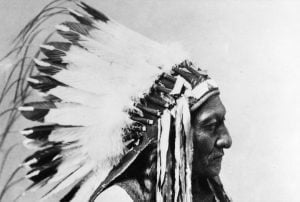Winnemucca, Chief of the Paiute
Like the great Montezuma of old Mexico, Chief Winnemucca, who was born and lived the most of his life beside Pyramid Lake, Nevada, had a thinking mind and a large, warm heart. He was chief of an Indian nation called the Paiute and before any white men came over the Rocky Mountains to disturb them, there were several thousand Indians, to whom he was like a father. He saw to it that they had plenty of good food to eat, nice furs and skins to wear, and handsome tepees (or wigwams) for their families to live in. He had a … Read more


